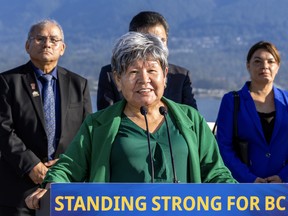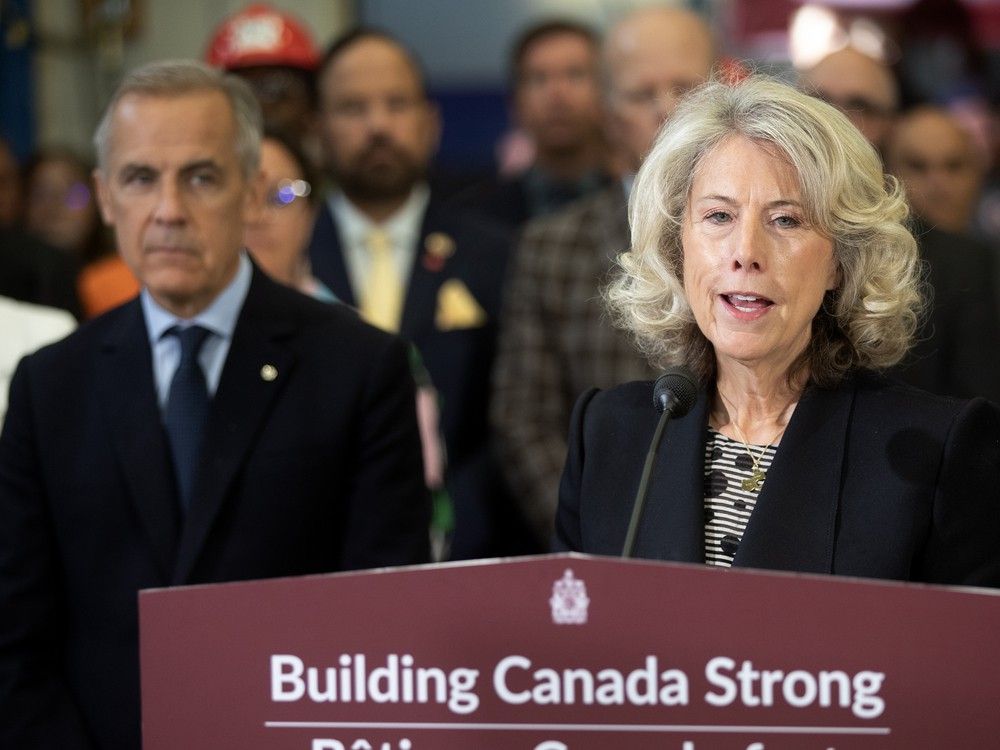
Article content
Both the Nisga’a and the Haisla First Nations in B.C. are ensuring they will determine their own futures by owning major projects, employing hundreds of people, and accruing revenues to build up their communities.
THIS CONTENT IS RESERVED FOR SUBSCRIBERS
Enjoy the latest local, national and international news.
- Exclusive articles by Conrad Black, Barbara Kay and others. Plus, special edition NP Platformed and First Reading newsletters and virtual events.
- Unlimited online access to National Post.
- National Post ePaper, an electronic replica of the print edition to view on any device, share and comment on.
- Daily puzzles including the New York Times Crossword.
- Support local journalism.
SUBSCRIBE FOR MORE ARTICLES
Enjoy the latest local, national and international news.
- Exclusive articles by Conrad Black, Barbara Kay and others. Plus, special edition NP Platformed and First Reading newsletters and virtual events.
- Unlimited online access to National Post.
- National Post ePaper, an electronic replica of the print edition to view on any device, share and comment on.
- Daily puzzles including the New York Times Crossword.
- Support local journalism.
REGISTER / SIGN IN TO UNLOCK MORE ARTICLES
Create an account or sign in to continue with your reading experience.
- Access articles from across Canada with one account.
- Share your thoughts and join the conversation in the comments.
- Enjoy additional articles per month.
- Get email updates from your favourite authors.
THIS ARTICLE IS FREE TO READ REGISTER TO UNLOCK.
Create an account or sign in to continue with your reading experience.
- Access articles from across Canada with one account
- Share your thoughts and join the conversation in the comments
- Enjoy additional articles per month
- Get email updates from your favourite authors
Sign In or Create an Account
or
Article content
This is the best vision of reconciliation, one that integrates First Nations into the B.C. economy as leaders on their own terms, with jobs and benefits for Indigenous and non-Indigenous people alike. There is no future in maintaining a status quo that stifles innovation and economic growth for those nations in the resource industry. It could not come at a better time for Canada.
Article content
Article content
Article content
British Columbia is set to become Canada’s top supplier of LNG to Asia and the Pacific, and First Nations are leading that transformation. LNG Canada, a liquefied natural gas export terminal in the town of Kitimat, loaded its first cargo of LNG bound for Asian markets on July 1, 2025.
Article content
By signing up you consent to receive the above newsletter from Postmedia Network Inc.
Article content
The Haisla Nation of Kitimat, which is partnered with LNG Canada, will soon unveil its own floating LNG facility in 2028, with provincial environmental approval granted in 2023 and a positive final investment decision in 2024.
Article content
Further north near Prince Rupert, the future Ksi Lisims LNG project, co-developed by the Nisga’a, was granted approval last month by the province’s Environmental Assessment Office. In the near future, the north coast of BC will be transformed into the biggest LNG export hub in all of Canada.
Article content
Those First Nations that bet early and bet big on LNG are poised to reap the windfall as industry players enter an exciting competition to supply Asia with LNG. The challenge will come from Alaska, where the United States is exploring a US$44 billion project to supply natural gas to Japan and other Asian markets.
Article content
Article content
Thanks to the Nisga’a and Haisla-led projects, BC is winning that race. Located about 60 kilometres north of Prince Rupert at Pearse Island, straddling the Alaska border, Ksi Lisims LNG has now also received federal approval under Ottawa’s one-project, one-review process for major projects.
Article content
Article content
Estimated to create up to 800 construction jobs and a permanent workforce of possibly 250 people for 30 years, Ksi Lisims LNG will be a major boost to the local economy.
Article content
“This is what reconciliation looks like: A modern treaty Nation once on the sidelines of our economy, now leading a project that will help write the next chapter of a stronger, more resilient Canada,” said Eva Clayton, president of the Nisga’a Lisims Government following the announcement of the approvals.
Article content
To supply the Ksi Lisims facility, the Prince Rupert Gas Transmission (PRGT) pipeline is being constructed alongside it. Co-owned by the Nisga’a and Western LNG, it is underway, with 42 kilometres of right-of-way passage cleared, nine bridges built, 47 kilometres of access roads completed, and $70 million invested in the first year of construction alone.
.png)
 6 hours ago
15
6 hours ago
15






























 Bengali (BD) ·
Bengali (BD) ·  English (US) ·
English (US) ·